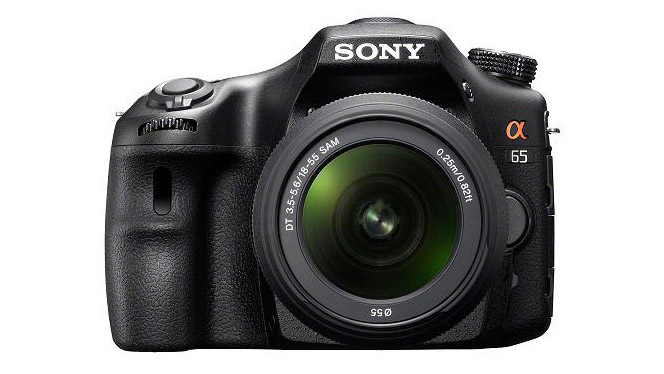Why you can trust TechRadar
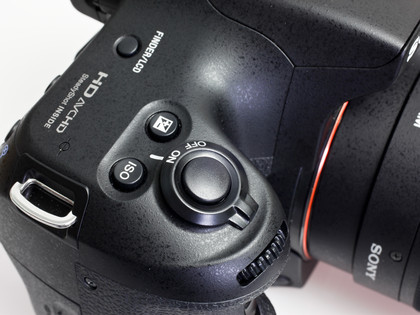
The A65 doesn't sport the same magnesium alloy body as the A77 – being constructed from a sturdy plastic instead – but still manages to give an overall impression of being well-made and robust enough to cope with everyday use.
Despite being considerably smaller than its big brother, there's still a reassuring weight to the camera and it feels well-balanced with the 18-55mm kit lens attached. The front grip is generously proportioned and clad in a tactile rubber coating that adds comfort and grip, along with the curved thumb pad around the back.
The control layout – while similar to that on the A77 – has been simplified on the A65, making it effortlessly easy to pick up and start shooting with the camera right away. One big difference between the two siblings is the loss of the top panel LCD on the A65, which facilitates its slimmer profile. Those who are accustomed to shooting with a camera that features a top panel LCD may find they miss it initially; however the rear LCD (and the EVF) is capable of displaying a very comprehensive set of shooting information if you choose to leave it permanently displayed.
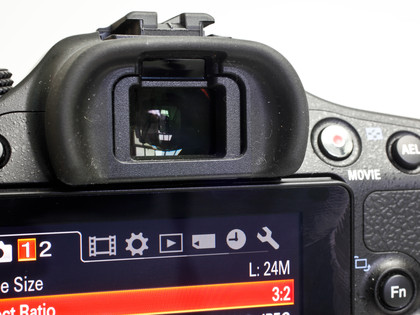
Additionally, some of the dedicated controls seen on the A77 have migrated to the back panel, appearing as shortcuts on the four-way navigation-pad that replaces the larger camera's joystick on the A65.
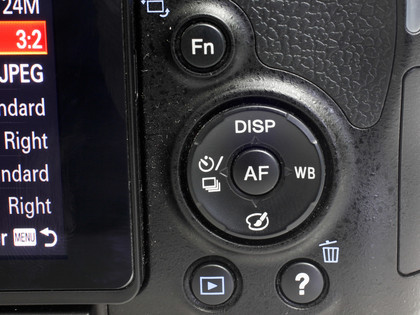
The A65's extensive range of exposure modes are all quickly accessed via its chunky mode dial. There are plenty of choices to explore, whether you're a beginner or more experienced photographer, with the latter being catered for by the full range of P, S, A, M modes.
Newcomers to photography benefit from a fully automatic exposure mode and a further Auto+ mode, which uses scene recognition to analyse your subject and pick the corresponding mode for you. The mode dial also offers access to a discreet 'no-flash' option, Sony's highly impressive 2D and 3D Sweep Panorama feature, 3D, 10fps continuous burst and HD movie modes. There's also a slot that calls up the A65's set of scene modes, covering everything from portraits, sports and macro to sunset, night scene and hand-held twilight situations.
While the control layout is a little different to the A77's, the A65 still offers fast access to all of the key settings you're likely to need while shooting, with dedicated buttons for exposure compensation and ISO sensitivity on top and softkey access to the camera's display, white balance, Picture Effect and drive mode options via the navigation pad.
The central AF button activates the A65's excellent Subject Tracking mode, while further controls call up playback options, the main menu system and a handy guide function that works as a built-in camera manual, featuring explanations of how to achieve different effects and make the most of a range of photographic situations. The latter is a really nice added touch that newcomers to photography will find genuinely useful, while more advanced users are also catered for with explanations relating to a selection of more complex techniques.
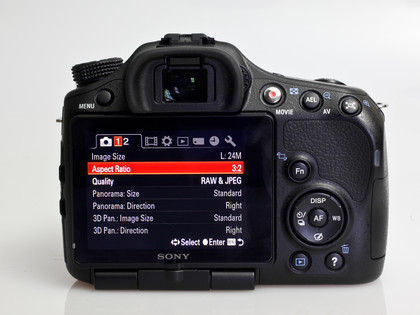
The main menu system sticks with Sony's tried-and-tested tabbed layout, with a black, white and orange colour scheme. It's logically laid out, easy to navigate and the range of options expands or contracts according to the exposure mode that you have selected, so you don't end up having to scroll through endless advanced options if you're working in one of the automatic modes for instance.
The one – somewhat surprising issue – we did encounter was an occasional delay between pressing a button / directional key to select and option and the camera responding to your input. This lag can hamper the shooting process if you're in a hurry, and we sometimes ended up either selecting the wrong feature or dismissing a change we had intended to make by pressing buttons more than once in the mistaken belief that our input hadn't been registered.
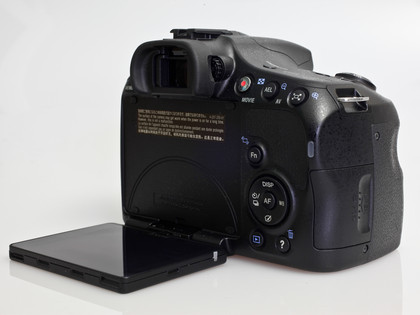
The screen itself offers 100% frame coverage and a high resolution, 921,000-dot display. In use, the 3-inch LCD is clear, bright and very detailed, with its anti-reflective coating proving its worth under bright conditions. It is articulated, but uses a different hinge mechanism to the A77, flipping out downwards as well as being capable of rotating to the left or right through 270-degrees. It's a little less versatile than its pricier sibling's three-way screen and can cause issues when the camera's mounted on a tripod, but still a useful feature that helps to make the most of the camera's excellent Live View and Full HD movie modes.
One of the A65's biggest assets that it inherits from the A77 is its OLED EVF (Organic Light Emitting Diode electronic viewfinder) which offers 100% frame coverage and an industry-leading resolution of 2,359,296-dots. A fast refresh rate, high contrast display and the ability to maintain shooting information, a live histogram or a virtual spirit level on the EVF monitor are all features that add to the appeal of what is arguably the best viewfinder of its type currently available on the market.
